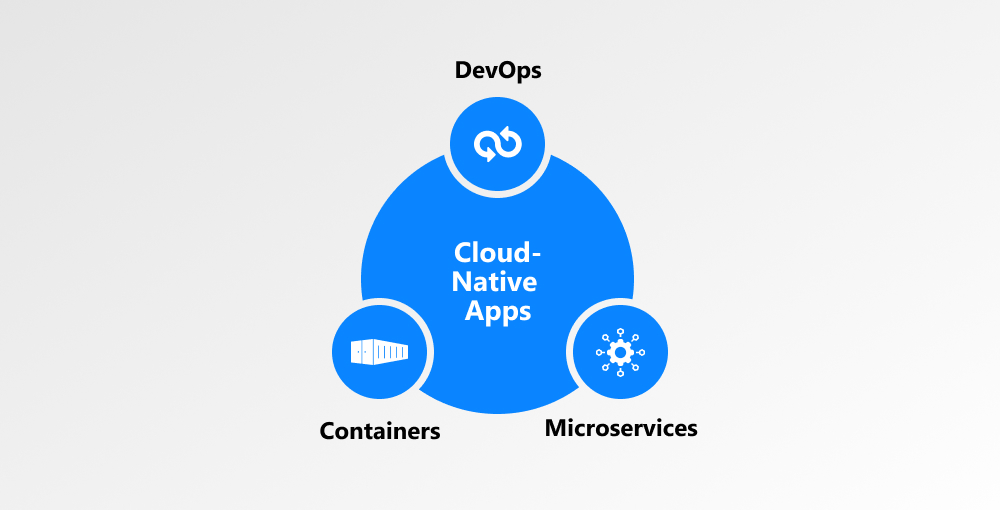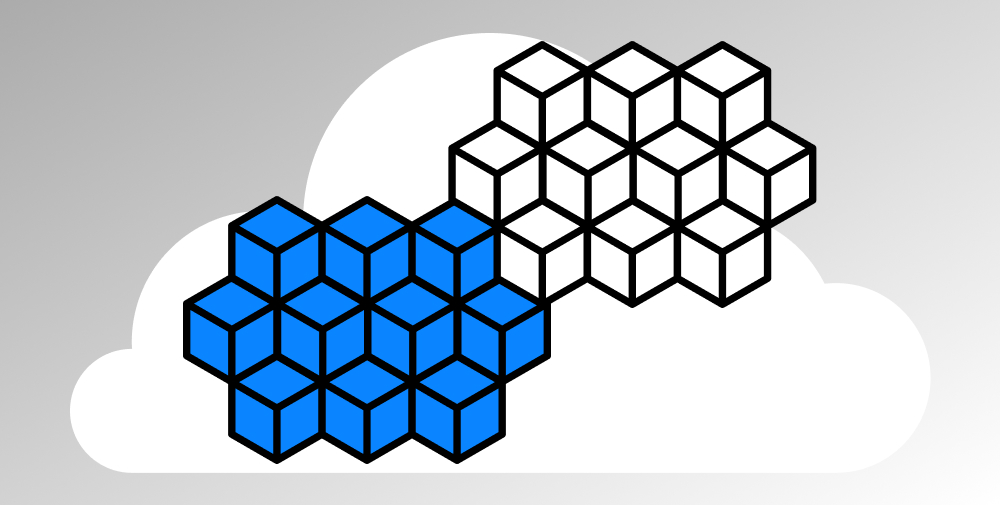Today, we all see almost ubiquitous cloud acceptance and a dramatic projected growth of cloud computing usage. So no wonder that even a student can easily understand why CEOs can’t afford to ignore this powerful technology. New cloud technologies — like cloud-native techs — arise and make cloud computing even more powerful. DevOps practices, microservices, and other features of a cloud-native innovative approach greatly affect the IT team’s performance allowing companies to meet customer needs and successfully compete in the market.
written by:
Anastasia Borodinets
Today, we all see almost ubiquitous cloud acceptance and a dramatic projected growth of cloud computing usage. So no wonder that even a student can easily understand why CEOs can’t afford to ignore this powerful technology. New cloud technologies — like cloud-native techs — arise and make cloud computing even more powerful. DevOps practices, microservices, and other features of a cloud-native innovative approach greatly affect the IT team’s performance allowing companies to meet customer needs and successfully compete in the market.
In this article, we will talk about ground-breaking cloud-native technologies and what Azure — the cloud vendor of choice for Qulix Systems — offers to its clients who are interested in cloud-native app development.
For a better understanding of the issue, we’ll briefly run through some of cloud-native definitions, moving to cloud-native software development facilities available in the Azure cloud. Go on reading to discover which services Microsoft’s public cloud computing platform offers for businesses wanting to tap the cloud-native potential.
What Are Cloud-Native Apps?
So, let’s now get down to cloud native app development. What is it? How has it managed to gain such wide market acceptance?
We use the term cloud-native application when talking about an app, which was built in the cloud and for the cloud. Cloud computing technology is significantly more flexible than traditional one, which means that the application built using such technology can be easily and quickly configured and optimized. The term is also inextricably linked to using containerized infrastructure, DevOps services, and microservices.
The cloud-native approach used for creating cloud-native apps implies developing and updating applications rapidly while reducing risks and enhancing quality. To be more specific, it’s a way to design scalable, responsive, and fault-tolerant solutions in public, private, or hybrid clouds. By choosing this approach the enterprises can respond to changes in customer demands promptly, create effective business projects, and release new features om a constant basis.
Below we are going to discuss essential characteristics of cloud-native applications, which are:
 Using containers for development and deploy
Using containers for development and deploy
Cloud-native apps are isolated in containers, which unite code and interdependencies together. Containers are independent. In comparison to virtual machines, they can scale out/in very quickly. Lightweight containers provide easy modular development and deployment.
Apps are managed through DevOps processes
The core of the DevOps culture lies in great communication between development and operations teams during the entire service lifecycle. Objectives of DevOps processes are safe and continuous development, fast integration, and testing of the application.
Microservices-based architecture
Loosely-coupled microservices facilitate introduction of changes and ensure high flexibility and agility of apps.
Now, that you know key definitions and characteristics, it is clear what the cloud-native app is about.
However, back to Azure.
Azure Cloud Facilities for Cloud Native App Development
What development facilities available in the Azure cloud do engineers use to avoid stressful nights of work when developing and deploying cloud-native apps? Let’s have a look at some of them.
DevOps
As we mentioned above, DevOps is a practice that promotes better collaboration between development and operations staff at each stage of the software development lifecycle. Microsoft offers its Azure DevOps — a platform with end-to-end DevOps solutions. It makes it possible for Dev and Ops teams to implement DevOps practices at every phase of the app lifecycle.
The SaaS platform from Microsoft provides all necessary services to exercise DevOps capabilities. The key benefit of Azure DevOps is that it works with any type of apps, irrespective of cloud, platform, or framework. It means that you do not even have to host your application in Azure to take advantage of Azure DevOps.
Below are some tools and services for application development available in Azure DevOps.
- Visual Studio — to streamline running and debugging serverless apps, to simplify finding and resolving performance issues, simulate running of your app in target environments.
- GitHub — to improve collaboration, easily create and set up workflows, accelerate software development, secure codes.
- Azure Boards — for agile planning, tracking projects at each development phase, customizing dashboards, getting native support for Kanban and Scrum.
Containerization
Containerization is an alternative to machine virtualization. It implies encapsulating application codes and associated dependencies in containers, which have their own operating environment and use the same operating system.
To develop container-based apps, Microsoft offers Azure Container Service. It provides reliable CI/CD tools for safe developing, updating, and deploying containerized apps. Azure Container Service ensures easy orchestration, scaling-up, and down for your containers.
You can deploy and manage your container-based application using the following Azure Container services:
- Azure Kubernetes Service (AKS) — to streamline and simplify Kubernetes and make it possible to scale application development flexibly and reliably.
- Azure Pipelines — to easily build and deploy, introduce automation, implement CI/CD, create new containers quickly.
- Container Registry — for managing and storing images for each type of container deployments, getting network-close storage of container images.
- Service Fabric — for deploying, packaging, and managing reliable and scalable containers. Service Fabric provides the most convenient way to configure environment variables and setting various networking modes for containers.
 Microservices
Microservices
Microservices or microservice architecture is a modern architectural style for creating applications using small, highly maintainable, independently deployable, and loosely coupled services. The microservice architecture ensures the speedy and reliable delivery of complicated applications. The main purpose of the architecture is to simplify app development and scaling.
For a better experience of using microservices in Azure, Microsoft offers the following:
- API Management — to increase microservices usability, simplify changing APIs, get capabilities to separate client app from internal microservices easily.
- Azure Functions — to develop serverless applications, build event-driven architecture rapidly.
- Service Fabric — to ease development and deployment of microservices-based applications, enable rolling upgrades, automatic scaling, and self-healing from faults.
These are the Azure cloud-native services that Qulix Systems recommends for you. Sure thing, this article describes only some of the most popular services for application development in Azure. There is a great number of those we failed to mention, as it’s hardly possible to do it within the limits of one article. Nevertheless, by applying even these nine you are going to achieve better manageability and impressive scalability of your app, among many other cloud-native benefits.
On a Final Note
Using a cloud-native approach when building and running applications allow you to appreciate all advantages of the cloud computing revolution. The cloud-native approach can add multiple positives to your apps, such as modularity, scalability, resiliency, deployability, replaceability. What concerns the Microsoft-run cloud platform, by using Azure for development of cloud-native apps you get a great number of high-tech and easy-to-use tools. Software development facilities available in the Azure cloud are designed to meet everyone’s needs, both those of beginners and more experienced engineers.
Additionally, we would also like to mention that when choosing top-notch cloud-native techs one should never neglect the expertise of the dev/architect that will use these services or tools. In case you don’t have such talents right now and would like to outsource your venture to some reputable company, we’re happy to share our human resources and expertise with you. Trust the critically important app development process to a multi-skilled IT company.
With the industry experience of over 20 years, Qulix Systems implements cloud projects of any size and complexity and provides further proactive support after your systems go live. Contact our support team to let us fully understand your project scope or visit our website to study Qulix Systems’ solid set of methods and philosophies on how to deliver intuitive and highly effective products.

Contacts
Feel free to get in touch with us! Use this contact form for an ASAP response.
Call us at +44 151 528 8015
E-mail us at request@qulix.com




 Using containers for development and deploy
Using containers for development and deploy


 Microservices
Microservices


